Scientists cooked up a 3D printed cheesecake
This laser-assembled dessert looks surprisingly tasty.
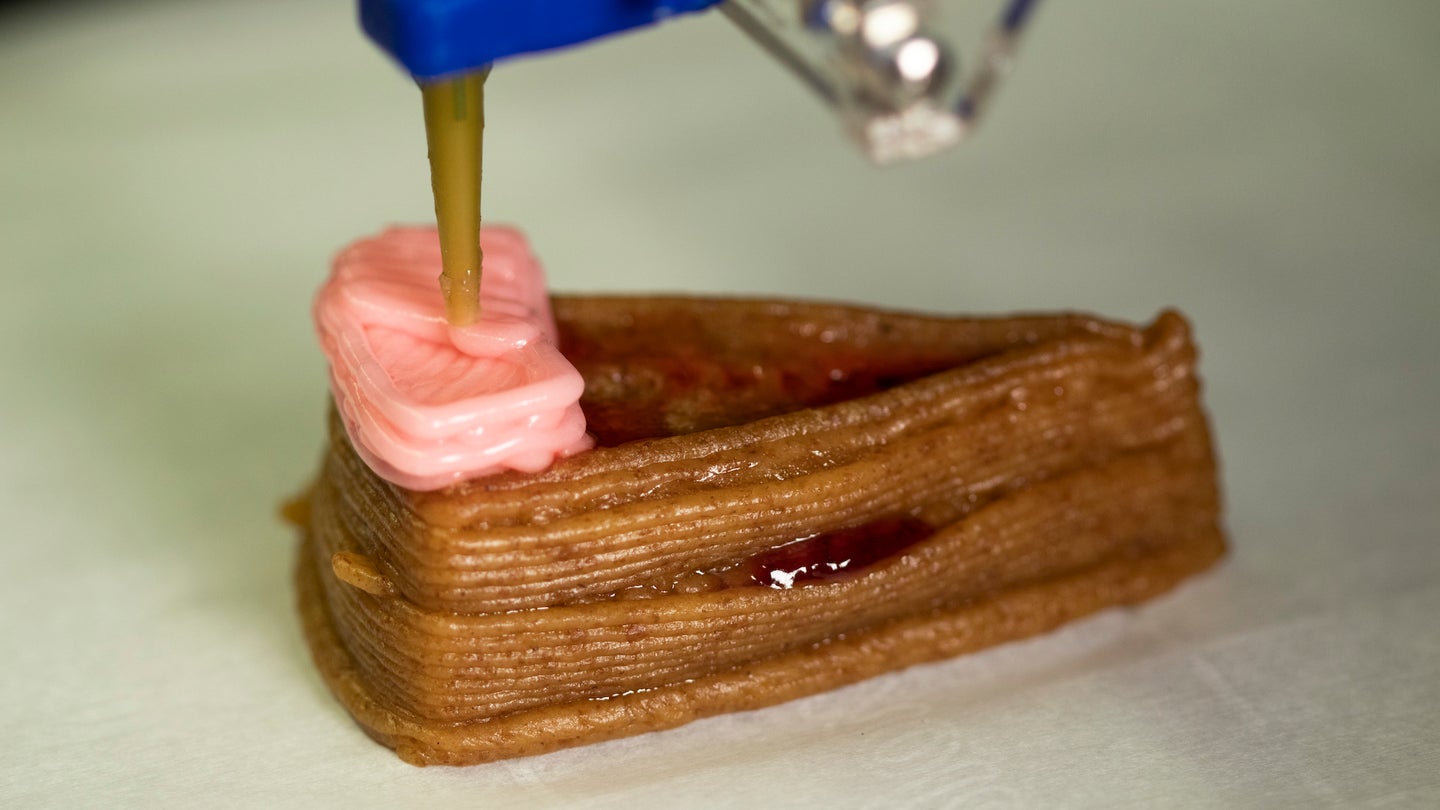
The sci-fi concept is so ubiquitous it’s practically its own trope: walk into the kitchen, press a button on a futuristic machine, and poof, dinner is instantaneously laser-assembled for your family. While (incredibly simple) 3D-printed food has actually been a reality for nearly two decades, the same group that first showcased its potential has recently taken one of its largest steps forward to date—cheesecake.
As detailed in an article published on Tuesday in npj Science of Food, researchers at Columbia University’s Creative Machines Lab pulled off printing and laser-cooking a tasty-looking, seven ingredient slice of cake made from edible “food inks” including peanut butter, nutella, and strawberry jam. Although still in its very early stages, the novel technique could prove extremely helpful for improving meals’ nutritional contents, as well as raising the bar for food safety.
[Related: How to enjoy fake meat in a way that actually helps the planet.]
Prior iterations of 3D-printed food have been comparatively rudimentary, and combined only a couple ingredients. The researchers’ cheesecake recipe—which also features a graham cracker crust, cherry jam, and even frosting—represents a sizable leap forward in what can be created in a cutting-edge kitchen. But unlike traditional cooking, 3D-printed and laser-cooked concoctions may often require “novel ingredient compositions and structures, due to the different way by which the food is ‘assembled,’” said Hod Lipson, one of the paper’s co-authors and a roboticist focused on AI and digital manufacturing.
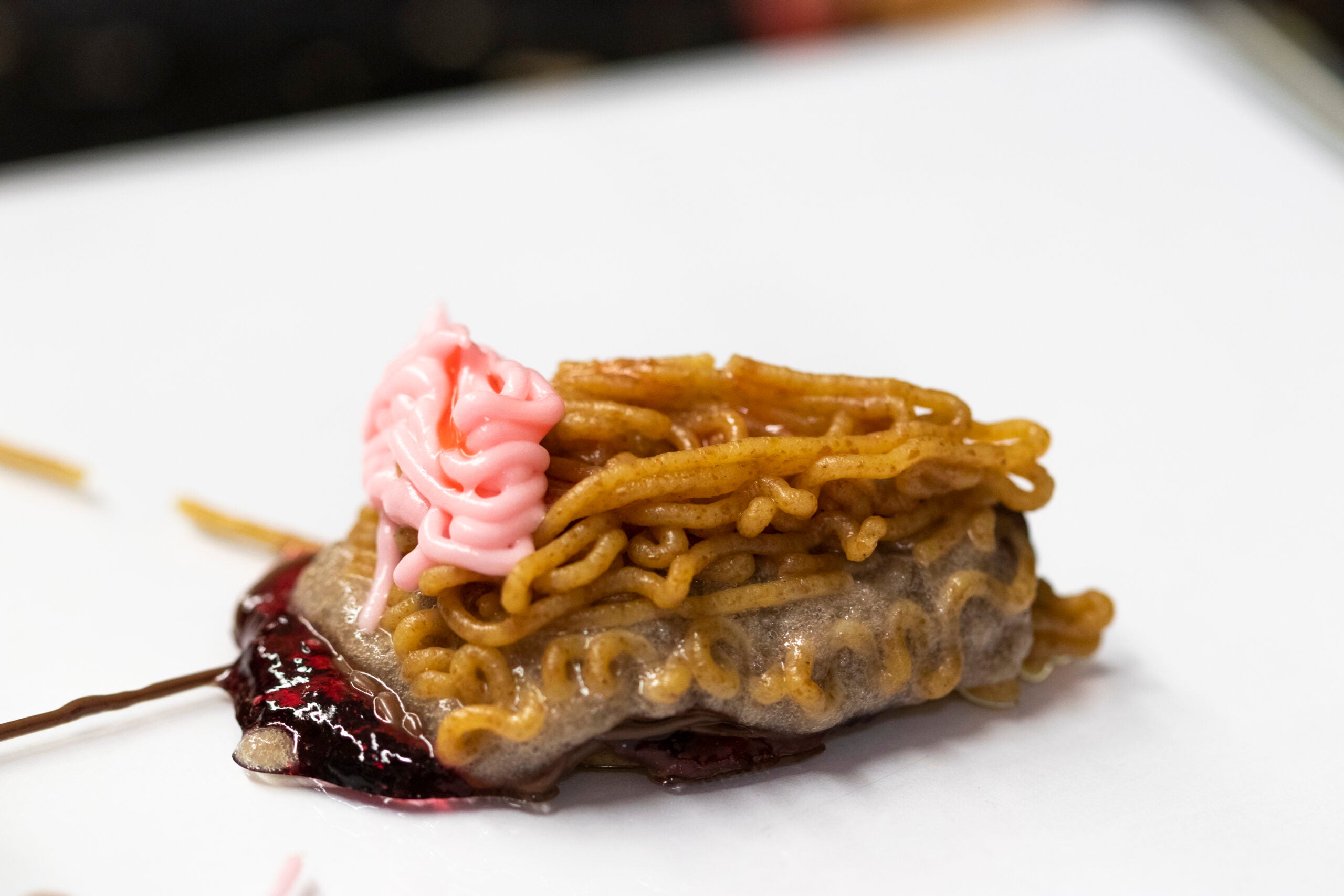
The culinary experimenters tested their 3D-printing methods by literally constructing various iterations of cheesecake with different layer structures and compositions. After trial and error, the group found that graham cracker bases for each layer proved to be the sturdiest, on which the Nutella and peanut butter “pools” hosted the jam and frosting.
[Related: Best 3D printers of 2023.]
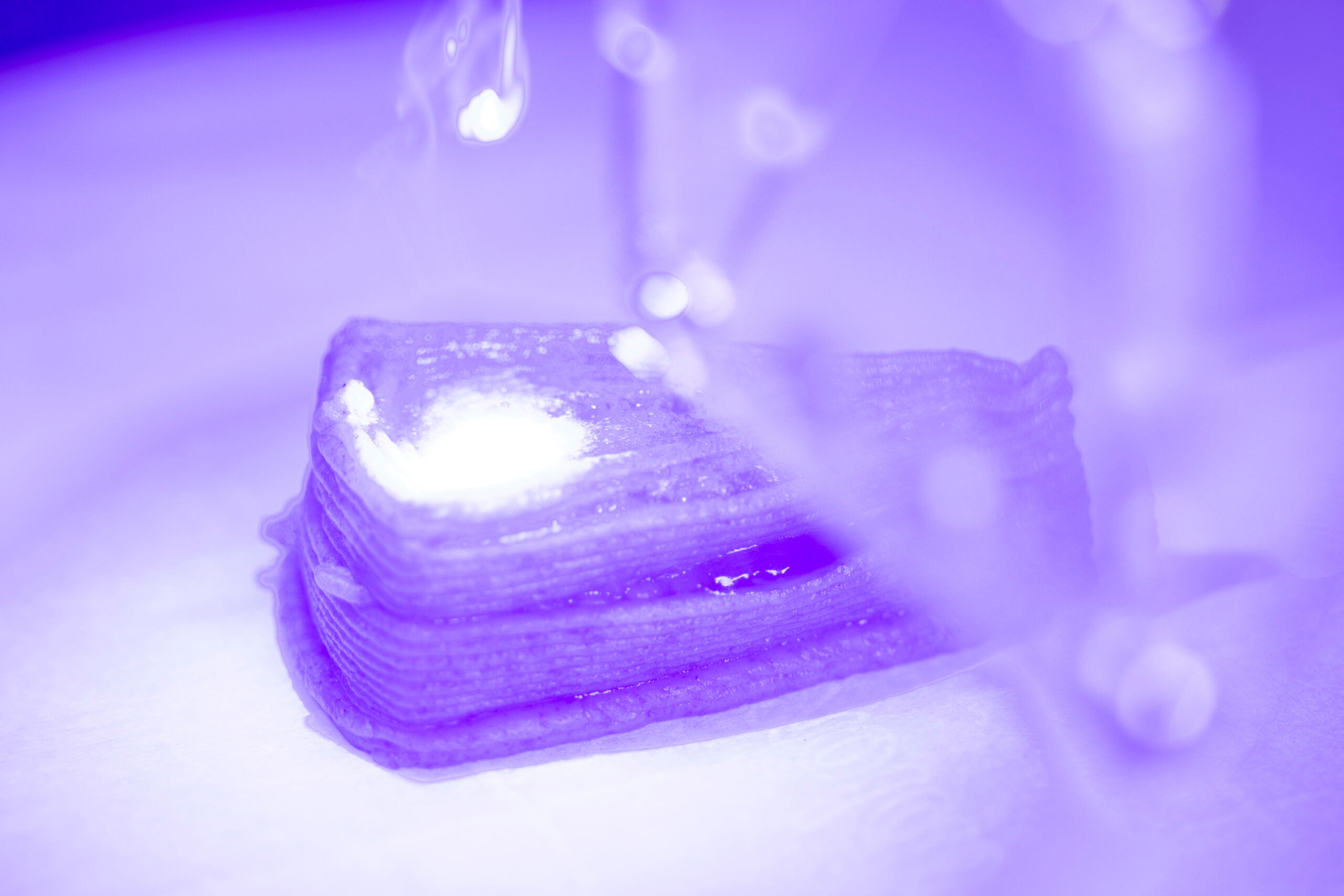
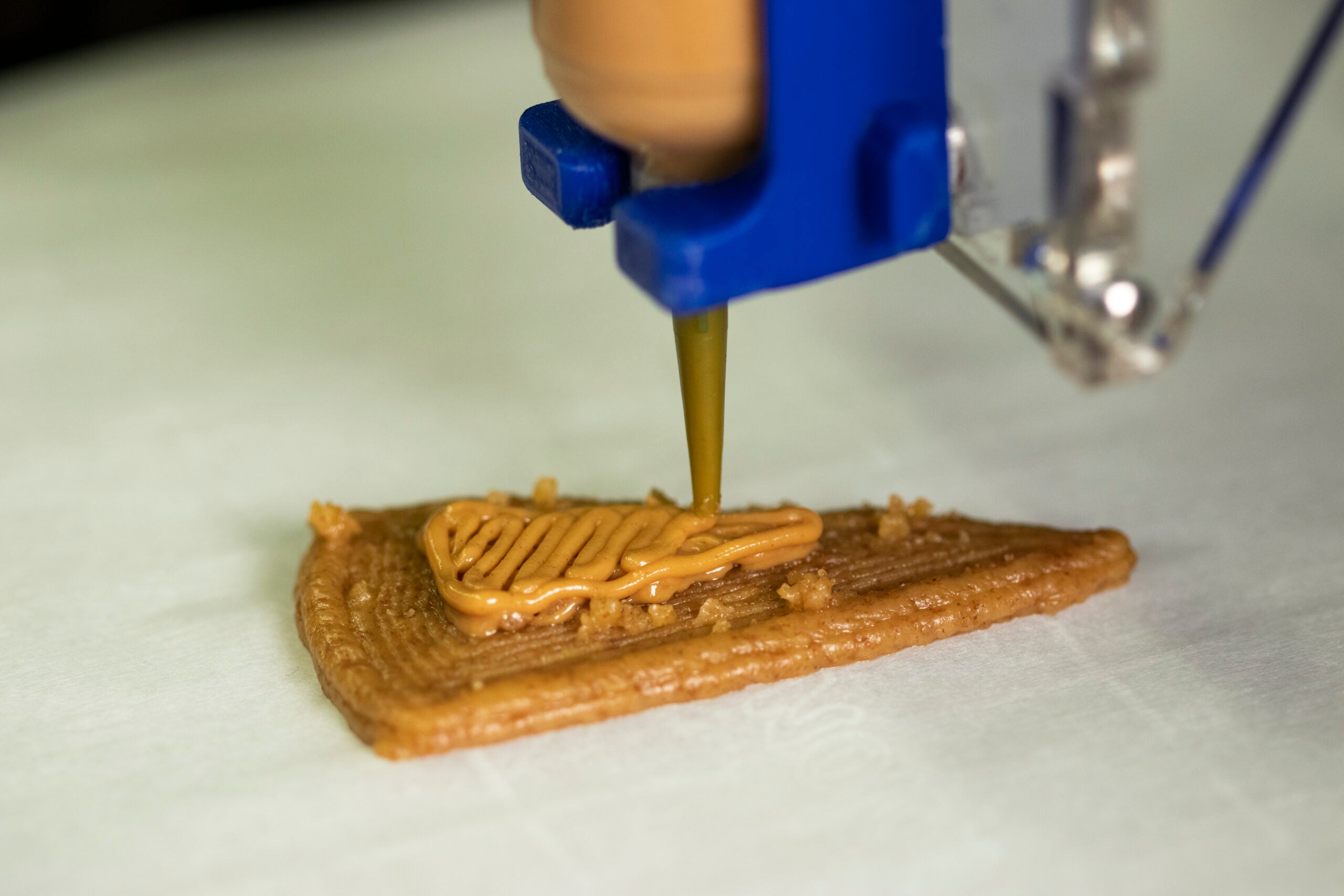
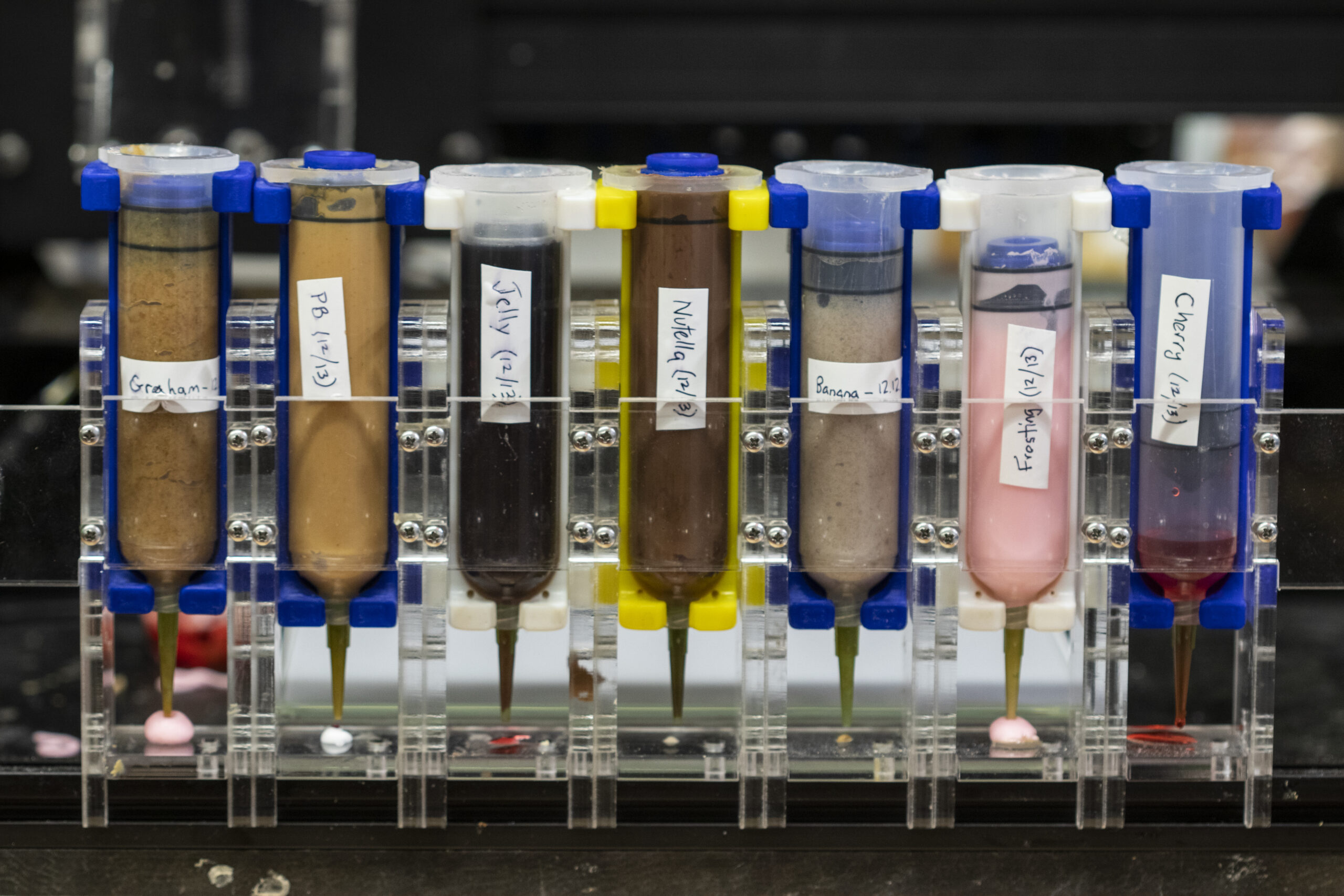
As difficult as this may sound compared to simply throwing ingredients in a mixer, the team thinks this artificial avenue could be practical for researchers in the plant-based meat industry tinkering on chemical and molecular levels to accurately mimic the real thing. For those with swallowing issues stemming from neurological maladies and other conditions, food-shaped pureed dishes could offer an extremely beneficial new option. Given that the printing relies on high-energy targeted laser light for heating, the actual cooking process could soon be both sustainable and economical.
Still, a lot still needs to be in place for a 3D-printed food industry to truly take shape, such as recipe files and food cartridge manufacturers, not to mention a consumer base who finds the enterprise appetizing. Coming out the gate with a peanut butter-Nutella cheesecake is a pretty great way to pique interests—as well as hunger levels.
